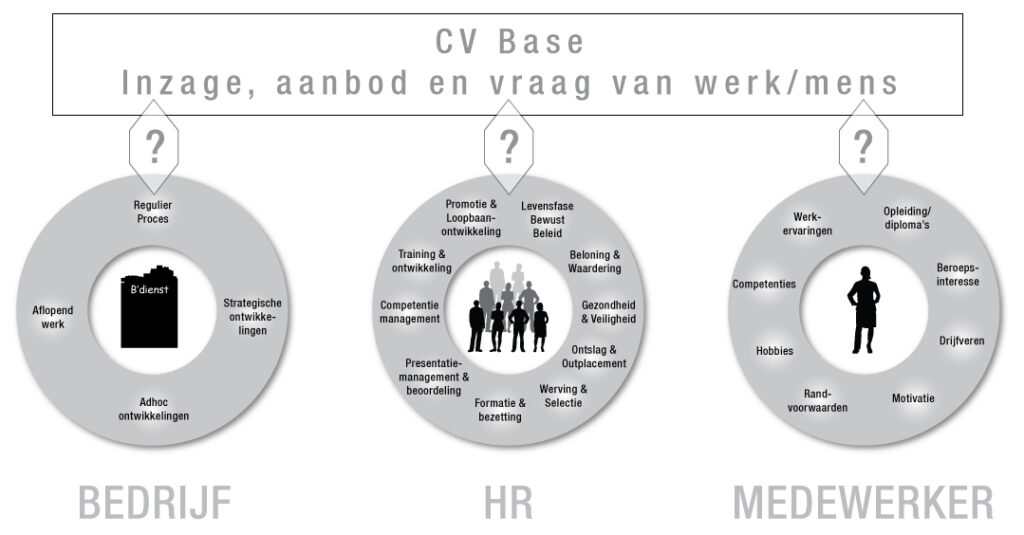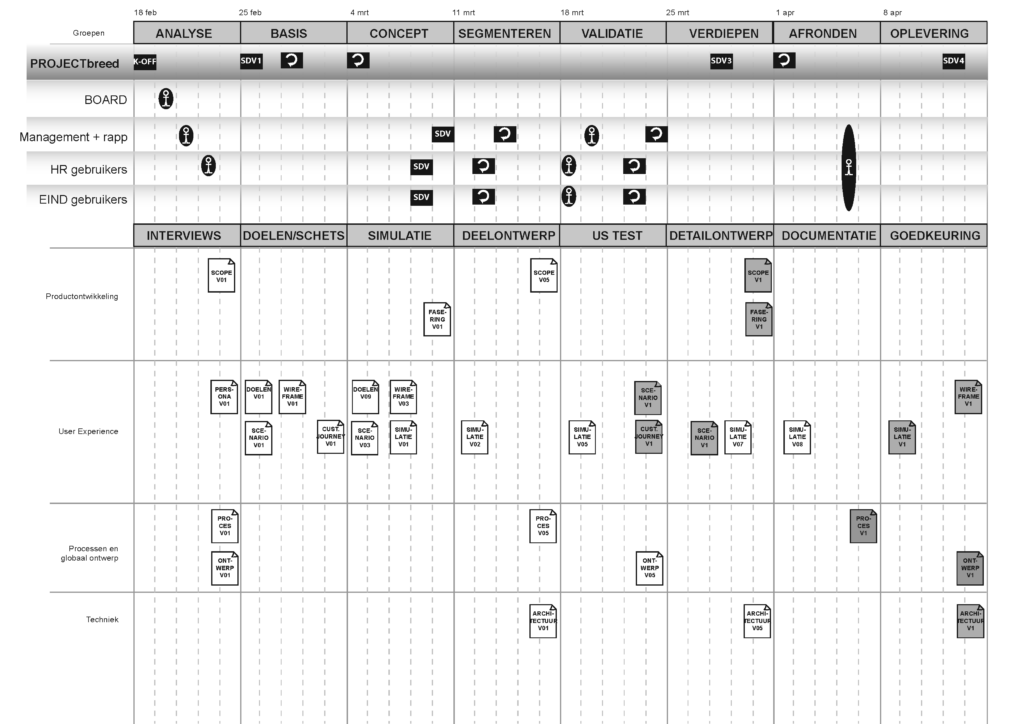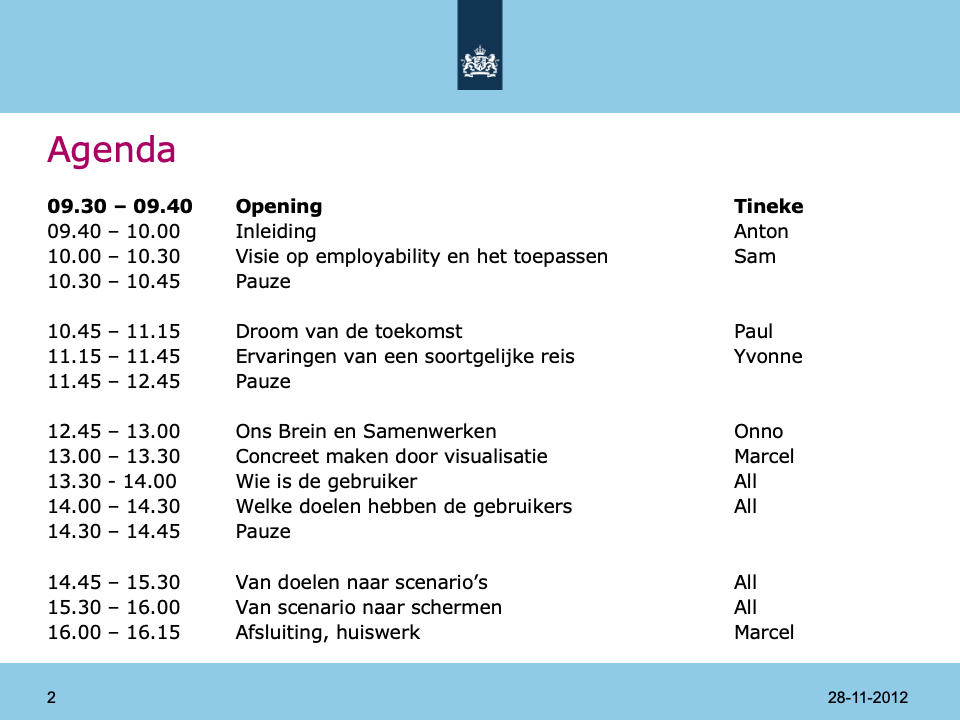Managing competences by giving insight in upcoming business needs and enabling people development
It all started with a small conversation where people of the Dutch Tax Office shared that they are dealing with a challenge, talking about it for three years but not able to make things concrete and understandable. It looks like that available competences internally were partly outdated and the expectation was that upcoming (digital) changes will make that part bigger. The Dutch Tax Office was struggling how to connect the strategic direction to competence development.

The first step was to understand the as-is situation by holding interviews with relevant stakeholders. There were many ideas but also systems that were seen as possible solution. But it became clear that there wasn’t one picture which was clarifying what the portal called CV Base should enable. I made a conceptual picture where was clarified that the portal is an enabler to connect the business, HR and the co-worker.

The biggest challenge was get commitment of the stakeholders to cooperate intensively to get things concrete via making it more visual, listen to co-workers and stakeholders and iterate towards a document that will help the Dutch Tax Office to a programme to realise CV Base. Our timeline of 8 weeks was aligned before we started and each member know on forehand when and how they needed to contribute. The short timeline was possible and chosen as pressure cooker.

As you can see at the planning we took the target groups as base. They were brought into creative workshops were insights were the base to visualise the possible future and address demands and dependencies. Our team of 5 UX designers were the facilitators but co-workers of the Dutch Tax office took topics to present and be the expert.

Visualisations were created, translated into to very low fidelity concepts, and validated with end-users covering all target groups. The feedback was leading to narrowing down the solution direction during co-creation workshops. The power of the user voice was used as steering instrument during discussions but we also took of course the business and tech perspective to check the feasibility of the possible direction. Things became concrete.

The end design was functional documented addressing the key functionality for all target groups to achieve the goal. Things like gamification and integration are happening behind the UI but crucial to get the need movement going. We also supported the IT analyse to compare building it fully, going hybrid with off-the-shelve/building UI and fully off-the-shelve. The Dutch tax office was closing a conversation of three years by getting concrete insight in what was needed in terms of organisation and technical to ensure that competence development was connected to be more future proof as organisation.